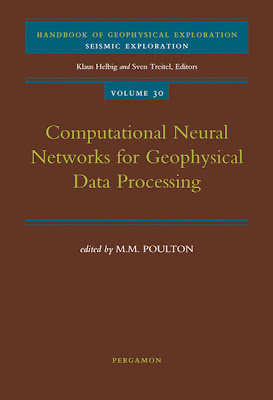
T A B L E OF C O N T E N T S
Preface
Contributing Authors
Part I Introduction to Computational Neural Networks
Chapter 1 A Brief History
1. Introduction
2. Historical Development
2.1. Mcculloch and Pitts Neuron
2.2. Hebbian Learning
2.3. Neurocomputing
2.4. Perceptron
2.5. ADALINE
2.6. Caianiello Neurons
2.7. Limitations
2.8. Next Generation
Chapter 2 Biological Versus Computational Neural Networks
1. Computational Neural Networks
2. Biological Neural Networks
3. Evolution of the Computational Neural Network
Chapter 3 Multi-Layer Perceptrons and Back-Propagation Learning
1. Vocabulary
2. Back-Propagation
3. Parameters
3.1. Number of Hidden Layers
3.2. Number of Hidden Pes
3.3. Threshold Function
3.4. Weight Initialization
3.5. Learning Rate and Momentum
3.6. Bias
3.7. Error Accumulation
3.8. Error Calculation
3.9. Regularization and Weight Decay
4. Time-Varying Data
Chapter 4 Design of Training and Testing Sets
1. Introduction
2. Re-Scaling
3. Data Distribution
4. Size Reduction
5. Data Coding
6. Order of Data
Chapter 5 Alternative Architectures and Learning Rules
1. Improving on Back-Propagation
1.1. Delta Bar Delta
1.2. Directed Random Search
1.3. Resilient Back-Propagation
1.4. Conjugate Gradient
1.5. Quasi-Newton Method
1.6. Levenberg-Marquardt
2. Hybrid Networks
2.1. Radial Basis Function Network
2.2. Modular Neural Network
2.3. Probabilistic Neural Network
2.4. Generalized Regression Neural Network
3. Alternative Architectures
3.1. Self Organizing Map
3.2. Hopfield Networks
3.3. Adaptive Resonance theory
Chapter 6 Software and Other Resources
1. Introduction
2. Commercial Software Packages
3. Open Source Software
4. News Groups
Part II Seismic Data Processing
Chapter 7 Seismic Interpretation and Processing Applications
1. Introduction
2. Waveform Recognition
3. Picking Arrival Times
4. Trace Editing
5. Velocity Analysis
6. Elimination of Multiples
7. Deconvolution
8. Inversion
Chapter 8 Rock Mass and Reservoir Characterization
1. Introduction
2. Horizon Tracking and Facies Maps
3. Time-Lapse Interpretation
4. Predicting Log Properties
5. Rock/Reservoir Characterization
Chapter 9 Identifying Seismic Crew Noise
1. Introduction
1.1. Current Attenuation Methods
1.2. Patterns of Crew Noise Interference
1.3. Pre-Processing
2. Training Set Design and Network Architecture
2.1. Selection of Interference Training Examples
2.2. Selection of Signal Training Patterns
3. Testing
4. Analysis of Training and Testing
4.1. Sensitivity to Class Distribution
4.2. Sensitivity to Network Architecture
4.3. Effect of Confidence Level During Overlapping Window Tabulation
4.4. Effect of NMO Correction
5. Validation
5.1. Effect on Deconvolution
5.2. Effect on CMP Stacking
6. Conclusions
Chapter 10 Self-Organizing Map (SOM) Network for Tracking
Horizons and Classifying Seismic Traces
1. Introduction
2. Self-Organizing Map Network
3. Horizon Tracking
3.1. Training Set
3.2. Results
4. Classification of the Seismic Traces
4.1. Window Length and Placement
4.2. Number of Classes
5. Conclusions
Chapter 11 Permeability Estimation with an RBF Network and
Levenberg-Marquardt Learning
1. Introduction
2. Relationship Between Seismic and Petrophysical Parameters
2.1. RBF Network Training
2.2. Predicting Hydraulic Properties From Seismic Information: Relation
Between Velocity and Permeability
3. Parameters That Affect Permeability: Porosity, Grain Size, Clay Content
4. Neural Network Modeling of Permeability Data
4.1. Data Analysis and Interpretation
4.2. Assessing the Relative Importance of Individual Input Attributes
5. Summary and Conclusions
Chapter 12 Caianiello Neural Network Method for Geophysical
Inverse Problems
1. Introduction
2. Generalized Geophysical Inversion
2.1. Generalized Geophysical Model
2.2. Ill-Posedness and Singularity
2.3. Statistical Strategy
2.4. Ambiguous Physical Relationship
3. Caianiello Neural Network Method
3.1. Mcculloch-Pitts Neuron Model
3.2. Caianiello Neuron Model
3.3. The Caianiello Neuron-Based Multi-Layer Network
3.4. Neural Wavelet Estimation
3.5. Input Signal Reconstruction
3.6. Nonlinear Factor Optimization
4. Inversion With Simplified Physical Models
4.1. Simplified Physical Model
4.2. Joint Impedance Inversion Method
4.3. Nonlinear Transform
4.4. Joint Inversion Step 1: MSI and MS Wavelet Extraction At the Wells
4.5. Joint Inversion Step 2: Initial Impedance Model Estimation
4.6. Joint Inversion Step 3: Model-Based Impedance Improvement
4.7. Large-Scale Stratigraphic Constraint
5. Inversion With Empirically-Derived Models
5.1. Empirically Derived Petrophysical Model for the Trend
5.2. Neural Wavelets for Scatter Distribution
5.3. Joint Inversion Strategy
6. Example
7. Discussions and Conclusions
Part III Non-Seismic Applications
Chapter 13 Non-Seismic Applications
1. Introduction
2. Well Logging
2.1. Porosity and Permeability Estimation
2.2. Lithofacies Mapping
3. Gravity and Magnetics
4. Electromagnetics
4.1. Frequency-Domain
4.2. Time-Domain
4.3. Magnetotelluric
4.4.. Ground Penetrating Radar
5. Resistivity
6. Multi-Sensor Data
Chapter 14 Detection of AEM Anomalies Corresponding to
Dike Structures
1. Introduction
2. Airborne Electromagnetic Method- Theoretical Background
2.1. General
2.2 Forward Modeling for 1 Dimensional Models
2.3. Forward Modelling for 2 Dimensional Models With EMIGMA
3. Feedforward Computational Neural Networks (CNN)
4. Concept
5. CNNs to Calculate Homogeneous Halfspaces
6. CNN for Detecting 2D Structures
6.1. Training and Test Vectors
6.2. Calculation of the Error Term (+1 ppm, +2ppm)
6.3. Calculation of the Random Models (Model Categories 6-8)
6.4. Training
7. Testing
8. Conclusion
Chapter 15 Locating Layer Boundaries with Unfocused
Resistivity Tools
1. Introduction
2. Layer Boundary Picking
3. Modular Neural Network
4. Training With Multiple Logging Tools
4.1. Mnn, Mlp, and Rbf Architectures
4.2. Rprop and Grnn Architectures
5. Analysis of Results
5.1. Thin Layer Model (Thickness From 0.5 to 2 M)
5.2. Medium-Thickness Layer Model (Thickness From 1.5 to 4 M)
5.3. Thick Layer Model (Thickness From 6 to 16 M)
5.4. Testing the Sensitivity to Resistivity
6. Conclusions
Chapter 16 A Neural Network Interpretation System for Near-Surface
Geophysics Electromagnetic Ellipticity Soundings
1. Introduction
2. Function Approximation
2.1. Background
2.2. Radial Basis Function Neural Network
3. Neural Network Training
4. Case History
4.1. Piecewise Half-Space Interpretation
4.2. Half-Space Interpretations
5. Conclusion
Chapter 17 Extracting IP Parameters From TEM Data
1. Introduction
2. Forward Modeling
3. Inverse Modeling With Neural Networks
4. Testing Results
4.1. Half-Space
4.2. Layered Ground
4.3. Polarizable First Layer
4.4. Polarizable Second Layer
5. Uncertainty Evaluation
6. Sensitivity Evaluation
7. Case Study
8. Conclusions
Author Index
Index
Another Neural Network Books
Download
No comments:
Post a Comment